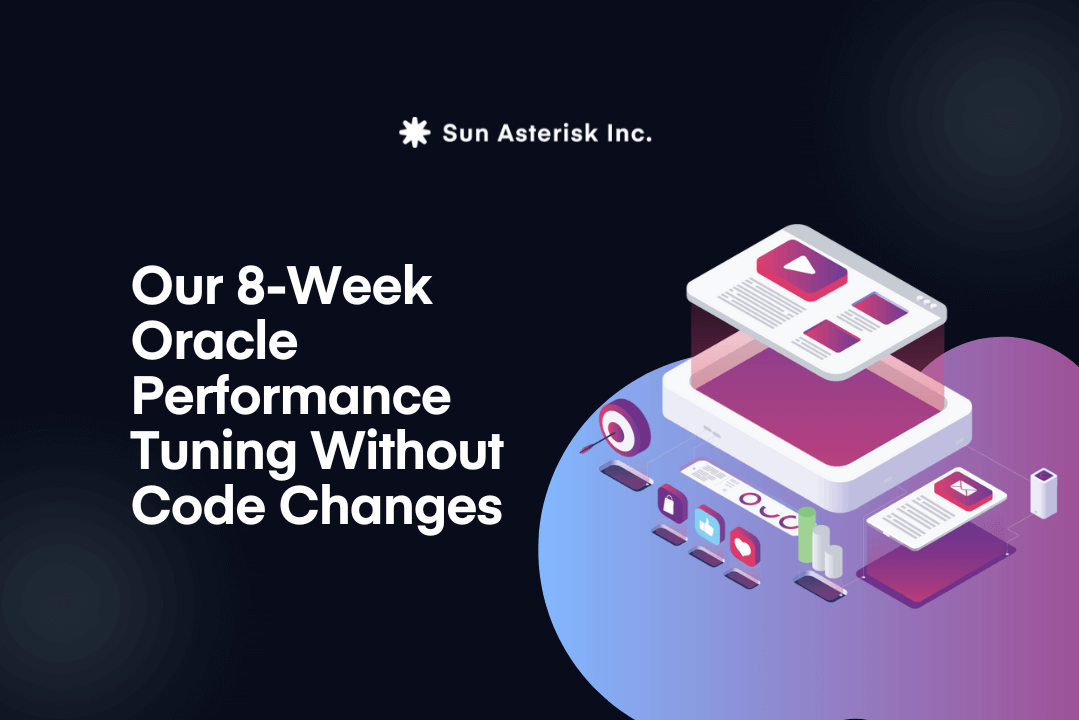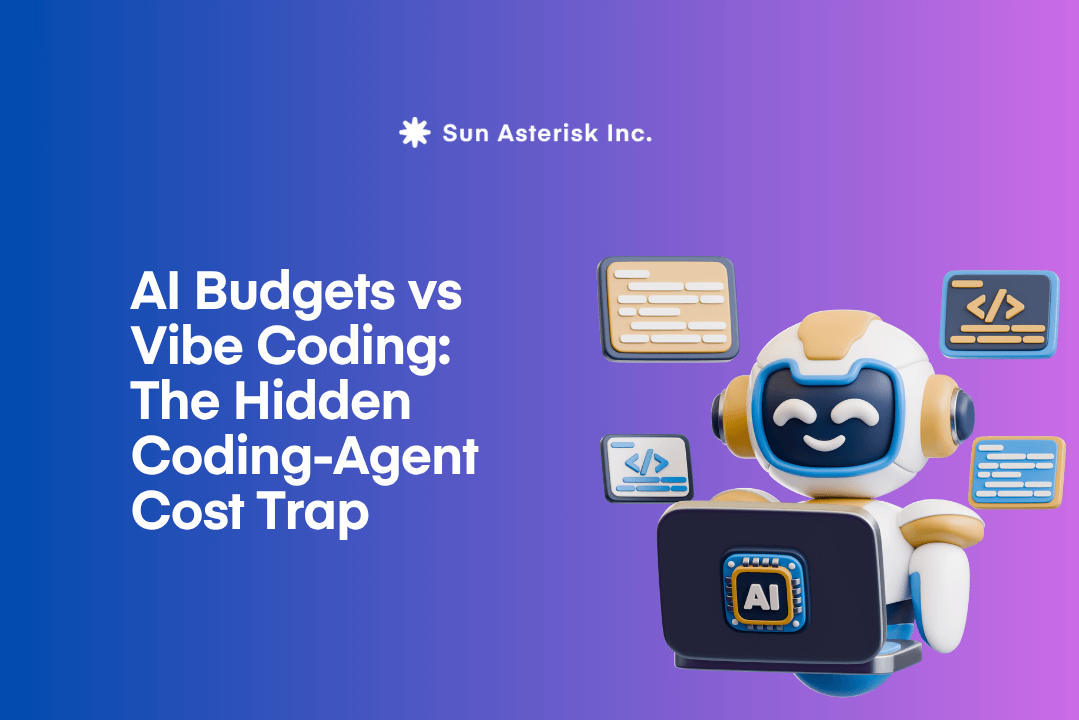Oracle performance tuning that saves us five hours?
Five. Hours.
That’s how long a critical batch query ran before timing out and rolling pain forward into the next business day.
Let’s see if this looks familiar to you:
Tickets piled up. Ops lived in firefight mode. Somehow, before you know it, infrastructure spend crept upward without meaningfully improving user experience.
You seek help.
Eight weeks later, the same workload was completed in 15 seconds – and with guardrails, rollbacks, and proof that it wasn’t some black magic.
Here’s the path we took (step by step) with receipts – a decision model that any CTO or Ops lead can reuse or copy to fix root causes before scaling a bottleneck and resorting to a risky re-architecture.
What the waits were trying to tell us
Most “database performance” projects fail because teams tune what’s visible (you name it: CPU, memory, instance size…) instead of what’s causal (wait events and query shape).
The fix isn’t more horsepower or a wholesale rewrite; it’s a wait-event-first method, applied with surgical changes, staged benchmarks, and hard exit criteria.
In an AI/IoT-heavy world, data platforms carry growing loads while budgets face the opposite trend.
For manufacturers and ops-driven firms, slow queries don’t just irritate users. They blow SLA windows, break handoffs to downstream systems (MES/ERP), and trigger expensive human workarounds. Speed without safety is fragile; safety without speed is irrelevant. You need both.

Oracle performance tuning works when we stop guessing
We let the waits speak, then we listened. It’s just one rule: no change without a wait-event cause.
We designed the work as a time-boxed, evidence-driven program: three phases, each with measurable outputs and a go/no-go gate.
Tooling included Oracle AWR reports for deep wait analysis and AWS Performance Insights + CloudWatch for system-level correlation.
Phase 1 (Weeks 1–2): Instrument first, opinions later
- Instruments on: We collected AWR snapshots across representative load periods, not just “bad days.”
- Name the bottleneck: Waits (not CPU) told the story: hotspots clustered around specific SQL statements and index gaps.
- Quantify impact: We traced the slow path to user-visible symptoms (timeouts, queue depth, missed batch windows) to keep the team anchored on outcomes.
🌱 Output
A ranked list of top offenders with hypothesized levers (SQL shape, indexing, caching), plus the metrics that would define success (P95/P99 latency, batch window adherence, error rate).
Phase 2 (Weeks 3–6): Small levers, big moves
- Surgical SQL tuning. We re-wrote the worst queries to reduce nested loops and eliminate unnecessary full scans.
- Indexing with discipline. New indexes targeted join/filter selectivity; we measured write-amplification costs explicitly to avoid death-by-index.
- Introduce a caching layer. For read-heavy, repeatable lookups we added a cache between the app and the database to cut redundant hits without breaking consistency guarantees.
- Safety first. Every change landed behind flags in staging first, with rollback scripts prepared before rollout.
🌱 Output
A candidate change set with expected wins and known trade-offs (write overhead, storage, invalidation complexity).
Phase 3 (Weeks 7–8): Prove it, don’t proclaim it
- Benchmark harness. We replayed production-like workloads in staging with realistic concurrency and dataset size.
- Compare honestly. Pre/post dashboards tracked P95/P99 latency, queue depth, and resource waits. “Faster” only counted if SLAs and error budgets still held under stress.
- Promote safely. We scheduled a low-risk cutover window, monitored leading indicators, and kept the rollback script one command away.
🌱 Output
The worst path dropped from ~5 hours to 15 seconds. Queues cleared. Batch windows were met. User-visible timeouts disappeared. Ops stopped firefighting and returned to engineering.
From Oracle performance tuning firefighting to engineering, again
Speed was the headline, but the deeper win was confidence: shared visibility into causes (waits!), a clean playbook for changes, and a measurable definition of “done.”
That confidence convinced our client to expand the engagement to other performance-sensitive parts of the platform.
Steal our Oracle performance tuning playbook
When the database is “slow,” don’t start with instance sizes or a rewrite RFP.
Run this Wait-Event-First Oracle Performance Tuning Without Code Playbook:
- Frame the outcome.
Tie “slow” to a customer-visible break (e.g., SLA breach, missed batch window). Choose 2–3 metrics that matter (P95/P99 latency for key paths, queue depth, error rate). - Collect enough reality.
Gather AWR over multiple typical and peak windows. If you can’t see wait events, you’re guessing. - Rank by leverage.
Prioritize top SQLs/operations by combined frequency × pain. Don’t let “interesting” displace “impactful.” - Choose the smallest lever first.
Can SQL shape or indexing fix it? Can a cache eliminate redundant reads safely? Each lever gets a hypothesis and a cost. - Stage under pressure.
Benchmark with realistic concurrency and data size. If your staging dataset is toy-sized, your results will be, too. - Promote with exits.
Define rollback conditions before you deploy. “We’ll know it’s bad if X spikes by Y% for Z minutes.” - Lock in learning.
Add the new dashboards/alerts to the runbook so the improvement survives team changes.
This isn’t a checklist for heroics; it’s a way to make performance work boring – in the best sense of the word.
Where this breaks (and how we keep it honest)
The indexing temptation
Indexes feel like free speed, so right up until write amplification bites. Reads fly; inserts and updates start sweating. In our 8-week Oracle performance tuning firefighting plan, we profile write rates first and log the before/after cost so nobody is surprised when that extra index lands.
Caching is a promise, not a band-aid
If the invalidation rule can’t be said in one clean sentence, it isn’t a cache—it’s a guess. We insist on something human like, “Invalidate on order_id update or every 5 minutes,” and we prove it with a tiny fail-first test.
Hot fixes don’t cure architecture
Yes, a tuned query can take you from hours to seconds. But if the schema or access pattern fights the workload, that win is runway, not absolution.
When AWR keeps pointing at the same wait events, we escalate to partitioning or a small design change instead of stacking more hints.
Numbers over anecdotes
We don’t hand-wave “faster.” We show dataset size, p50/p95 latency, throughput, and the exact concurrency we tested.
Plus any shortcuts we took. Stakeholders get the graph, not a story.
Data handled like production
AWR and trace snippets can carry sensitive details. We mask, minimize, and share on a need-to-know basis. The goal is making Oracle performance tuning work, not to cause surprises in audit.
What this means for CTOs & Tech Leaders
Your job isn’t tuning queries. It’s setting the rules: make performance auditable, demand causal evidence, and fund time-boxed experiments that buy options.
Set the guardrails, then let the numbers talk.
Auditable by design
Performance work isn’t a magic show; it’s change management with stricter math. We write the hypothesis (“reducing log file sync waits by 60% via commit batching”), snapshot the baseline (AWR/ASH, p50/p95, throughput, concurrency), and stage changes behind a canary.
Every step has a success metric, a rollback that’s one command away (plan baseline off, index drop, cache bypass), and a short post-mortem if reality disagrees. If we can’t roll it back quickly, we don’t roll it out.
Chasing causes, not charts
Cloud dashboards are great for storytelling; wait events make decisions. We follow the top two waits until they confess.
db file sequential read points us at access paths (index shape, clustering, partition pruning).
log file sync sends us to commit patterns and log writer throughput.
buffer busy waits pushes us toward block contention and hot spots. Cosmetic dips in CPU graphs don’t count; causality in wait profiles does. When the waits move, users feel it.
Buying options in eight weeks
The promise isn’t “mystical 10×.”
It’s clarity. A disciplined, time-boxed run tells you whether the ceiling is query and stats, schema and access patterns, or storage and config.
By week eight, you’re deciding with evidence: another round of tuning, a small schema change, a caching seam at the app layer—or, only then, a re-architecture.
We don’t sell rewrites; we earn the right to avoid one.
What we’d do differently next time
Even with a strong result, we keep a Kaizen mindset. We’d start sooner with a shared dashboard of the few metrics that actually represent user impact (P95/P99, queue depth).
And we’d add a “sunset test” three months post-deployment to ensure index creep and logic drift haven’t eroded the gains.
That’s it, our Oracle performance tuning how-to for you.
Let’s make performance predictable
Yes, predictable sounds boring.
But,
The fastest way to waste money on performance is to scale a bottleneck you don’t understand.
We believe that what your tech architecture needs is not a louder hardware – but a repeatable way to remove bottlenecks and prove it under pressure
The fastest way to earn trust is to expose the bottleneck, change the smallest thing, and then prove it.
If you’re staring at query timeouts, missed batch windows, or rising infrastructure bills, we can run a Performance Triage: quick AWR snapshot review, a ranked hypothesis list, and a go/no-go call on whether surgical tuning or deeper changes will pay off.
Book a 30-minute Performance Triage (AWR snapshot optional) with our Oracle experts
P/S: We didn’t win a bigger contract because we promised 15 seconds. We won it because we showed our work, earned the numbers, and made the path repeatable.




